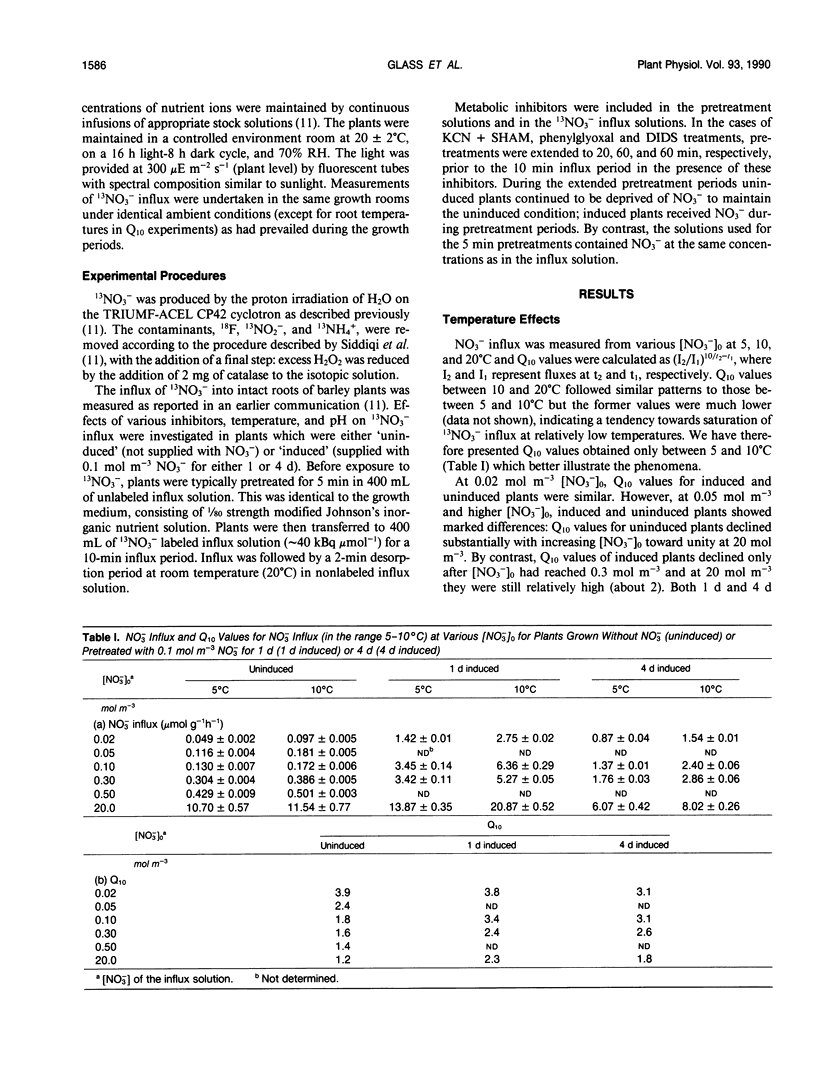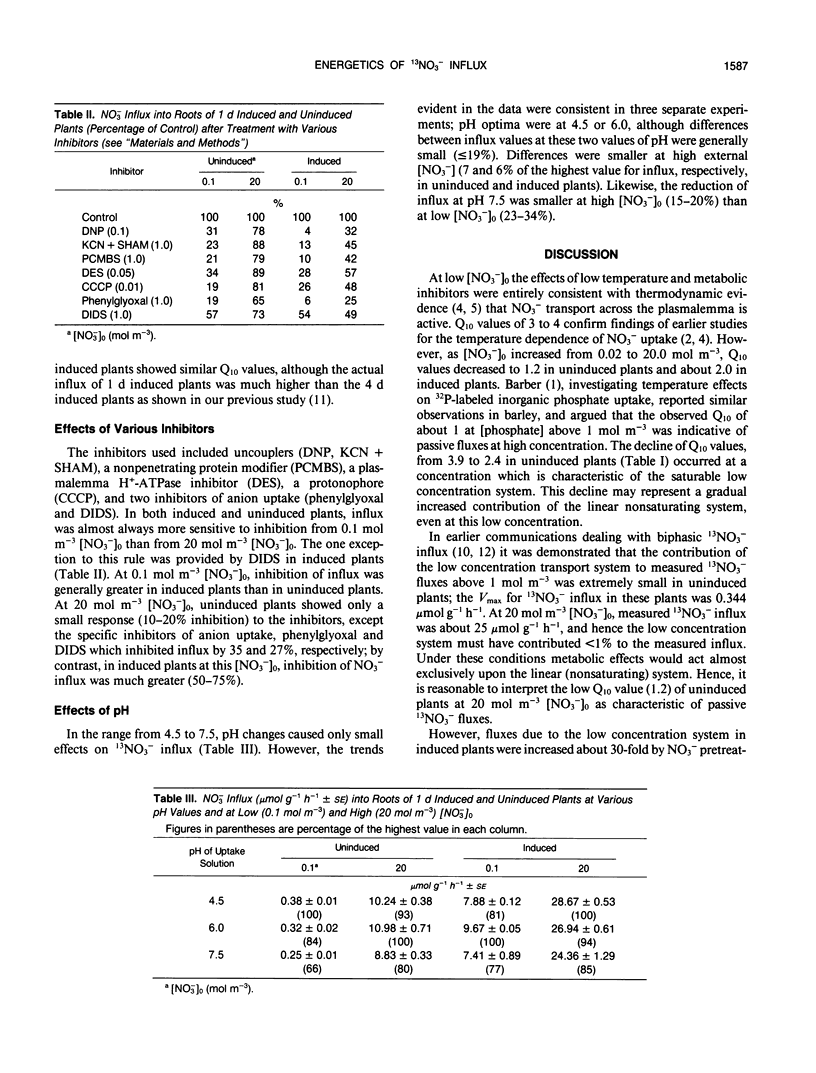Abstract
Q10 values for 13NO3− influx were determined in `uninduced' (NO3−-starved) and `induced' (NO3−-pretreated) roots of barley (Hordeum vulgare L.) plants at various concentrations of external NO3− ([NO3−]0). At 0.02 mole per cubic meter [NO3−]0, Q10 values for influx were from 3 to 4 between 5 and 10°C. As [NO3−]0 increased Q10 values decreased, reaching values of 1.2 and 2.0, respectively, at 20 moles per cubic meter in uninduced and induced plants. The metabolic dependence of 13NO3− influx at low and high [NO3−]0 (0.1 and 20.0 moles per cubic meter, respectively) in uninduced and induced plants was probed by the use of various inhibitors. These experiments confirmed the findings of the Q10 studies, demonstrating that at low [NO3−]013NO3− influx was extremely sensitive to metabolic inhibition. By contrast, at high [NO3−]0, influx was relatively insensitive to the presence of inhibitors.
Full text
PDF




Selected References
These references are in PubMed. This may not be the complete list of references from this article.
- Clarkson D. T., Warner A. J. Relationships between Root Temperature and the Transport of Ammonium and Nitrate Ions by Italian and Perennial Ryegrass (Lolium multiflorum and Lolium perenne). Plant Physiol. 1979 Oct;64(4):557–561. doi: 10.1104/pp.64.4.557. [DOI] [PMC free article] [PubMed] [Google Scholar]
- Fett W. F., Dunn M. F. Exopolysaccharides Produced by Phytopathogenic Pseudomonas syringae Pathovars in Infected Leaves of Susceptible Hosts. Plant Physiol. 1989 Jan;89(1):5–9. doi: 10.1104/pp.89.1.5. [DOI] [PMC free article] [PubMed] [Google Scholar]
- Higinbotham N., Etherton B., Foster R. J. Mineral ion contents and cell transmembrane electropotentials of pea and oat seedling tissue. Plant Physiol. 1967 Jan;42(1):37–46. doi: 10.1104/pp.42.1.37. [DOI] [PMC free article] [PubMed] [Google Scholar]
- Rao K. P., Rains D. W. Nitrate absorption by barley: I. Kinetics and energetics. Plant Physiol. 1976 Jan;57(1):55–58. doi: 10.1104/pp.57.1.55. [DOI] [PMC free article] [PubMed] [Google Scholar]
- Siddiqi M. Y., Glass A. D., Ruth T. J., Fernando M. Studies of the Regulation of Nitrate Influx by Barley Seedlings Using NO(3). Plant Physiol. 1989 Jul;90(3):806–813. doi: 10.1104/pp.90.3.806. [DOI] [PMC free article] [PubMed] [Google Scholar]
- Siddiqi M. Y., Glass A. D., Ruth T. J., Rufty T. W. Studies of the Uptake of Nitrate in Barley: I. Kinetics of NO(3) Influx. Plant Physiol. 1990 Aug;93(4):1426–1432. doi: 10.1104/pp.93.4.1426. [DOI] [PMC free article] [PubMed] [Google Scholar]


